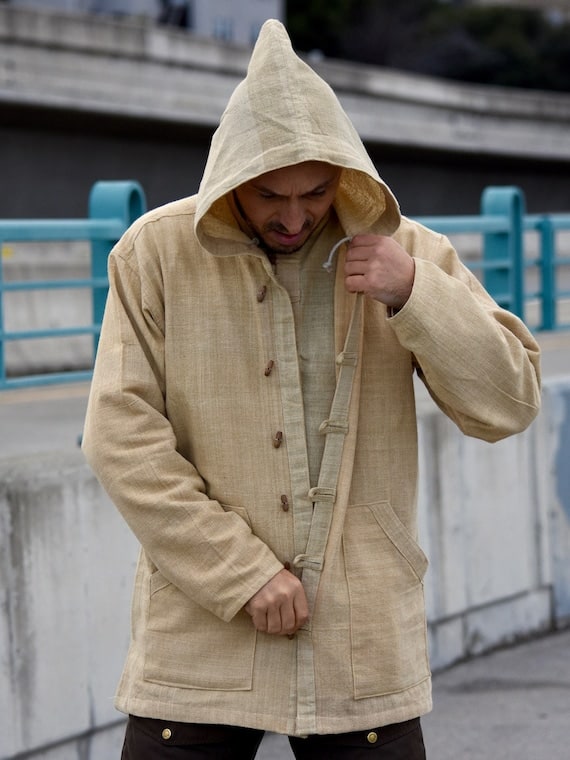Are you curious about the growing popularity of hemp clothing within the slow fashion movement? In this article, we will explore how hemp clothing aligns perfectly with the values of sustainability, ethical production, and conscious consumerism that define the slow fashion movement. Discover how this versatile and eco-friendly fabric is making waves in the fashion industry and why incorporating hemp clothing into your wardrobe can contribute to a more sustainable and responsible lifestyle. Whether you’re a fashion enthusiast or simply interested in making mindful choices, this article will shed light on the integration of hemp clothing within the slow fashion movement. So, let’s dive in and uncover the fascinating world of hemp fashion together!
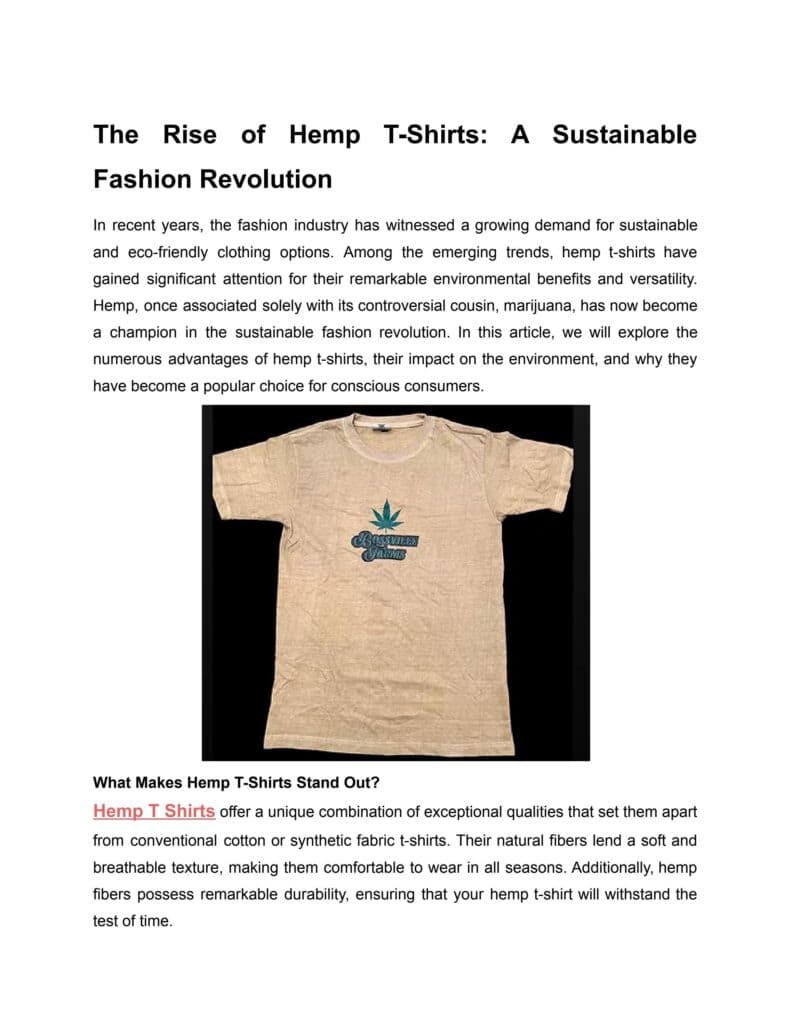
This image is property of image.isu.pub.
The Benefits of Hemp Clothing
Hemp clothing has gained significant popularity in recent years due to its numerous benefits. From sustainability and durability to breathability and versatility in design, hemp clothing offers a range of advantages for both consumers and the environment. Let’s explore why hemp clothing is considered a sustainable choice and how it contributes to the slow fashion movement.
Sustainability and Environmental Impact
One of the key benefits of hemp clothing is its sustainability. Hemp is a fast-growing crop that requires minimal water, pesticides, and herbicides compared to conventional cotton. It can be cultivated with organic and regenerative farming practices, making it an environmentally friendly choice. Hemp also acts as a carbon sink, absorbing more CO2 from the atmosphere than it emits during its growth, thus reducing greenhouse gas emissions.
Durability and Longevity
Hemp fibers are known for their incredible durability and longevity. Hemp clothing is so strong that it can withstand years of wear and tear without losing its shape or quality. Unlike synthetic fabrics, hemp clothing does not pill easily and does not break down as quickly. By investing in hemp clothing, you can enjoy long-lasting garments and reduce the need for frequent replacements.
Breathability and Comfort
When it comes to comfort, hemp clothing excels. The natural fibers of hemp allow for excellent breathability and moisture-wicking properties, making it an ideal choice for warm climates or physical activity. Hemp fabric absorbs and releases moisture quickly, keeping you dry and comfortable throughout the day. Additionally, hemp clothing feels soft and smooth against the skin, providing a luxurious and cozy wearing experience.
Versatility in Design
Hemp fabric’s versatility extends to its design capabilities. Hemp clothing can be styled for both casual and high-fashion looks, making it suitable for various occasions. From everyday essentials like t-shirts and jeans to elegant dresses and suits, hemp can be transformed into a wide range of garments. Its natural texture adds an organic and earthy touch to any outfit, creating a unique fashion statement.
Regenerative Farming Practices
In addition to its direct benefits to consumers, hemp clothing also supports regenerative farming practices. Hemp cultivation improves soil fertility and health by acting as a natural weed suppressant, reducing the need for synthetic herbicides. Furthermore, hemp’s deep root system helps prevent erosion and encourages water retention in the soil. By choosing hemp clothing, you indirectly promote sustainable agriculture that prioritizes the long-term health of our planet.
The Slow Fashion Movement
The slow fashion movement is a response to the negative impacts of fast fashion on the environment and society. It advocates for a more ethical, sustainable, and conscious approach to fashion production and consumption. Hemp clothing aligns perfectly with the values and principles upheld by the slow fashion movement. Let’s delve into the concept, philosophy, and practices associated with this movement.
Concept and Philosophy
At its core, the slow fashion movement emphasizes quality over quantity and encourages consumers to foster a deeper connection with their clothing. It promotes the idea of slowing down the production and consumption cycles, focusing on craftsmanship, durability, and the value of timeless garments. Slow fashion aims to shift the fashion industry towards a more sustainable and ethical model, challenging the throwaway culture perpetuated by fast fashion.
Sustainable and Ethical Production
Slow fashion prioritizes sustainable and ethical production practices. It values transparency, fair wages, safe working conditions, and the absence of child labor. Hemp clothing aligns with these principles as it can be produced using organic and regenerative farming methods, ensuring minimal environmental impact. Additionally, hemp cultivation supports fair trade and fair wages, with many hemp clothing brands actively contributing to the well-being of farmers and artisans.
Consumption and Conscious Consumerism
The slow fashion movement also calls for conscious consumerism by promoting mindful purchases and reducing fashion waste. It urges individuals to question their consumption habits and make informed decisions regarding clothing purchases. Hemp clothing plays a crucial role in this regard, as it offers long-lasting durability and versatility, encouraging consumers to invest in timeless pieces that can be incorporated into capsule wardrobes.
Hemp as a Sustainable Choice
Fast Fashion vs. Slow Fashion
When comparing fast fashion with slow fashion, it becomes evident that hemp clothing aligns more with the slow fashion mindset. Fast fashion relies on cheap labor, unsustainable production practices, and synthetic fabrics, contributing to significant environmental degradation. In contrast, hemp clothing embodies the principles of slow fashion by utilizing a renewable natural resource, employing sustainable farming techniques, and providing a durable and timeless alternative to trend-driven garments.
Hemp as a Renewable Resource
Hemp is a highly renewable resource that can be grown quickly and sustainably. Hemp plants require minimal water compared to other crops like cotton, reducing the strain on water sources. Additionally, hemp grows densely and provides a high yield per acre, making it an efficient and sustainable choice for textile production. By choosing hemp clothing, you support the utilization of renewable resources and reduce the reliance on non-renewable materials.
Reduced Water Consumption
One of the most significant environmental benefits of hemp clothing is its reduced water consumption. Conventional cotton production requires vast amounts of water, depleting water sources and contributing to water scarcity in certain regions. On the other hand, hemp cultivation requires significantly less water, as hemp plants can absorb moisture more efficiently. By opting for hemp clothing, you actively contribute to conserving water resources and combatting the global water crisis.
Chemical-Free Cultivation
Hemp clothing offers a chemical-free alternative to conventional textiles. The cultivation of hemp often requires minimal or no pesticides and herbicides, as the plant naturally repels pests and weeds. This eliminates the need for harmful chemical treatments that can contaminate soil, waterways, and endanger farmers’ health. By wearing hemp clothing, you minimize your exposure to potentially toxic chemicals and support a healthier environment for all.
Positive Impact on Soil Health
Hemp cultivation has a positive impact on soil health and quality. Hemp plants have deep roots that help prevent soil erosion, stabilize the ground, and improve soil structure. Moreover, hemp acts as a natural phytoremediator, meaning it has the ability to absorb contaminants from the soil and clean up polluted areas. By growing hemp for textile production, farmers can regenerate soil health and make way for more sustainable agricultural practices.
The Environmental Impact of Hemp Clothing
Low Carbon Footprint
Hemp clothing boasts a significantly low carbon footprint compared to many other textiles. Hemp plants absorb a substantial amount of CO2 during their growth cycle, making them highly effective carbon sinks. Furthermore, the manufacturing processes involved in transforming hemp fibers into fabric require fewer chemicals and fossil fuels, resulting in reduced greenhouse gas emissions. By opting for hemp clothing, you contribute to lowering carbon emissions and combatting climate change.
Biodegradability and Compostability
Unlike synthetic fabrics derived from petroleum, hemp clothing is biodegradable and compostable. When disposed of properly, hemp clothing breaks down naturally in the environment, leaving no harmful residues. This contrasts with synthetic fibers that can take hundreds of years to degrade, contributing to microplastic pollution and environmental degradation. By choosing hemp clothing, you reduce waste and promote a circular economy in which materials can be safely returned to the earth.
Reduced Water Usage
As mentioned earlier, hemp clothing requires less water than conventional cotton during cultivation. This reduction in water usage has a significant positive impact on water conservation. By wearing hemp clothing, you indirectly contribute to protecting water sources, reducing water pollution, and ensuring the availability of clean water for future generations.
No Pesticides or Herbicides
Conventional cotton is notorious for its heavy reliance on pesticides and herbicides, which can have detrimental effects on the environment and human health. In contrast, hemp cultivation requires minimal or no pesticides and herbicides, as the plant possesses natural resistance to pests and weeds. By opting for hemp clothing, you support sustainable and organic farming practices that prioritize the health of ecosystems and minimize chemical contamination.
Alternative to Synthetic Fibers
Hemp clothing serves as an excellent alternative to synthetic fibers commonly used in the fashion industry. Synthetic fabrics, such as polyester and nylon, are derived from non-renewable resources and have a significant environmental impact during production and disposal. Hemp, on the other hand, is a renewable resource that offers similar durability and functionality without contributing to the abundance of non-biodegradable waste. By choosing hemp clothing, you actively reduce the demand for synthetic fibers and promote a more sustainable fashion industry.
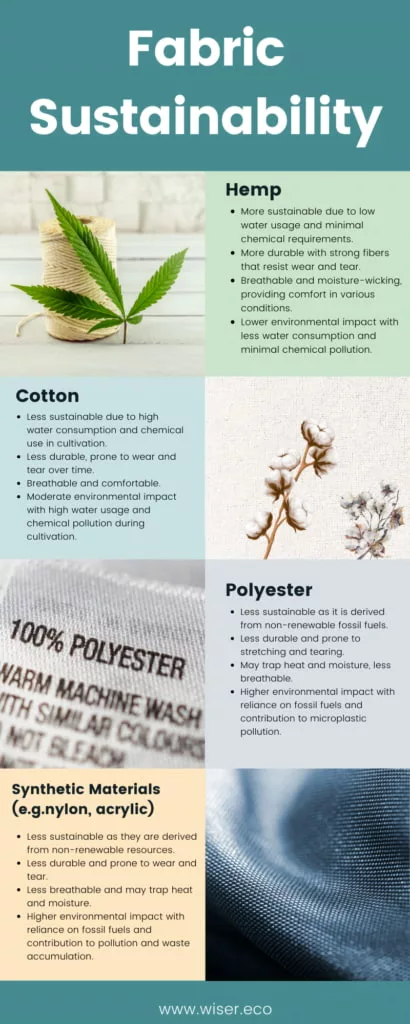
This image is property of wiser.eco.
Hemp Clothing’s Contribution to Ethical Production
Fair Trade and Fair Wages
The production of hemp clothing often aligns with fair trade principles, ensuring that farmers and artisans receive fair wages for their work. Fair trade certifications guarantee ethical production practices, transparency, and equitable working conditions. By purchasing hemp clothing with fair trade certifications, you support the livelihoods of those involved in the production process and contribute to empowering communities, particularly in developing countries.
Safe and Healthy Working Conditions
Another essential aspect of ethical production is ensuring safe and healthy working conditions. Hemp clothing brands that prioritize ethical practices prioritize the well-being of their workers. By adhering to stringent health and safety standards, these brands ensure that the production of hemp clothing occurs in a safe environment, free from hazardous chemicals, and with proper protective equipment. By choosing hemp clothing from such brands, you promote worker rights and well-being.
No Child Labor
Child labor is a significant issue in the fashion industry, particularly in regions where poverty and lack of opportunities prevail. Hemp clothing brands that prioritize ethical production strictly prohibit the use of child labor. By supporting these brands and purchasing hemp clothing, you contribute to the eradication of child labor and protect the rights of vulnerable children, ensuring they have access to education and a chance for a better future.
Transparency and Supply Chain Traceability
Ethical hemp clothing brands prioritize transparency and supply chain traceability. They strive to establish direct relationships with farmers, spinners, weavers, and other stakeholders involved in the production process. By providing transparency, these brands allow consumers to make informed choices about the products they purchase, ensuring that they align with their ethical values. Transparent supply chains also enable accountability and verification of fair trade and ethical practices.
Supporting Artisanal and Small-Scale Producers
Hemp clothing production often involves artisanal and small-scale producers who uphold traditional craftsmanship and contribute to cultural preservation. By supporting these producers, you help sustain traditional skills and revitalize local economies. Artisanal and small-scale production also often prioritize sustainable practices and low environmental impact. By choosing hemp clothing from these producers, you actively support and promote sustainable and ethical fashion.
The Versatility of Hemp Clothing
From Casual to High Fashion
Hemp clothing offers versatility across all fashion spectrums, from casual everyday wear to high-end fashion. The natural aesthetic of hemp fabric lends itself well to casual styles, providing a relaxed and earthy look. However, hemp can also be transformed into elegant and sophisticated garments suitable for formal occasions. The versatility of hemp clothing allows you to create a diverse wardrobe that caters to your personal style, while still adhering to sustainable and ethical principles.
Various Types of Garments
Hemp clothing encompasses a wide range of garments suitable for different purposes and seasons. T-shirts, jeans, jackets, and hoodies are just a few examples of casual hemp clothing that can be effortlessly incorporated into your everyday wardrobe. For more formal occasions, hemp dresses, blazers, and trousers offer a stylish and sustainable alternative. Whether you need something cozy for a lazy day or a statement piece for a special event, hemp clothing has got you covered.
Use in Accessories and Home Textiles
Hemp is not limited to clothing alone; it extends its versatility to accessories and home textiles as well. Hemp fiber can be used to create bags, wallets, hats, and even shoes, providing sustainable alternatives to commonly used synthetic materials. Furthermore, hemp fabric can be woven into various home textiles, such as curtains, bedding, and upholstery, bringing a touch of natural elegance and sustainability to your living spaces.
Ability to Blend with Other Fibers
Hemp fibers also have the unique ability to blend well with other natural fibers, such as organic cotton, linen, and silk. This opens up endless possibilities for fabric innovation, allowing designers to create textiles with enhanced properties and a unique blend of aesthetics. By blending hemp with other fibers, manufacturers can further diversify the range of hemp clothing available, catering to different preferences and needs.
Customization and Personalization
Hemp clothing can be easily customized and personalized to suit individual preferences. The natural fibers of hemp readily absorb dyes, allowing for vibrant and long-lasting colors. Furthermore, hemp fabric can be block printed, embroidered, or embellished, adding unique patterns and designs to garments. Customization options empower consumers to create clothing that reflects their individuality and personal style, fostering a deeper connection with their garments.
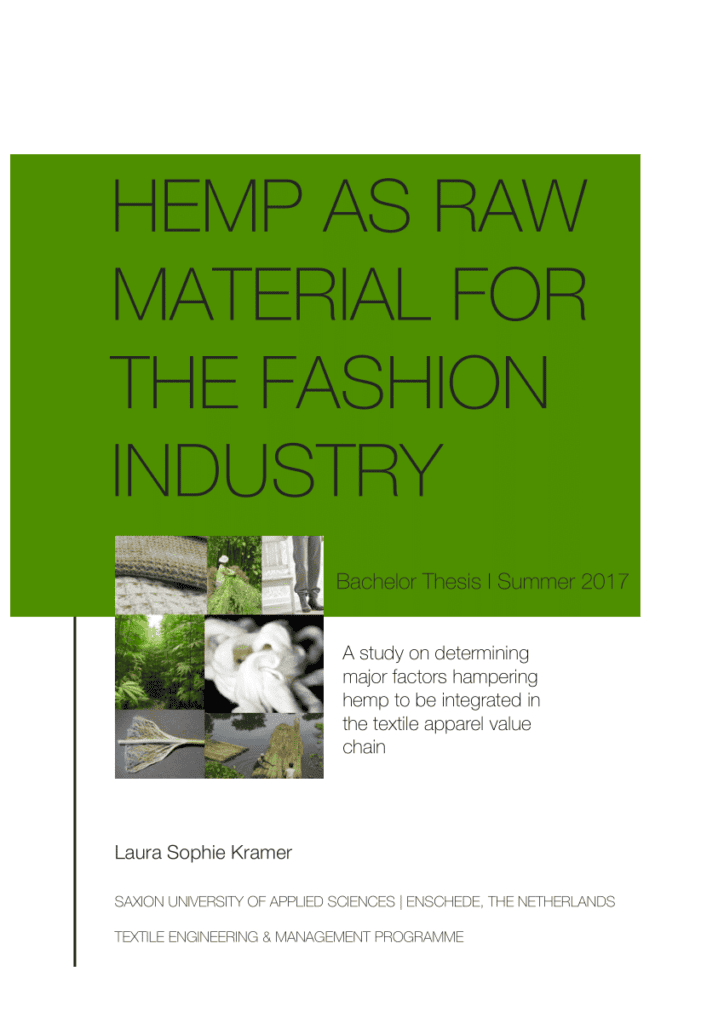
This image is property of i1.rgstatic.net.
Hemp Clothing and Comfort
Breathability and Moisture-Wicking Properties
Hemp clothing excels in providing exceptional breathability and moisture-wicking properties. The natural fibers of hemp allow air to circulate freely, preventing the buildup of heat and humidity against the skin. This breathability ensures that hemp clothing keeps you cool and comfortable, even in warmer climates or during physical activities. Additionally, hemp fabric quickly absorbs moisture, wicking it away from the body and promoting fast evaporation, leaving you feeling dry and fresh.
Temperature Regulation
Hemp clothing offers excellent temperature regulation properties, making it suitable for various weather conditions. In hot weather, hemp fabric’s breathability and moisture-wicking abilities enable it to keep you cool by allowing air circulation and swift moisture evaporation. Conversely, in cooler weather, hemp clothing acts as an insulating layer, trapping body heat and keeping you warm. This versatility makes hemp clothing adaptable to different climates and provides year-round comfort.
Softness and Texture
Contrary to popular belief, hemp fabric is incredibly soft and comfortable against the skin. With each wash and wear, hemp clothing becomes even softer while still retaining its strength and durability. The natural texture of hemp fabric adds a unique and organic touch to garments, infusing them with character and style. Hemp clothing provides a luxurious, cozy, and comfortable feel, ensuring that you can enjoy both style and comfort simultaneously.
Resistance to Mold and Mildew
Due to its absorbent nature and breathability, hemp fabric naturally resists mold and mildew growth. Mold and mildew thrive in damp environments, but hemp clothing’s ability to wick moisture away from the body prevents the conditions necessary for their growth. This resistance to mold and mildew ensures that your hemp clothing remains fresh and odor-free, even in humid climates or during sweaty activities.
Hypoallergenic and Anti-Bacterial Qualities
For individuals with sensitive skin or allergies, hemp clothing is an excellent choice. Hemp fabric’s hypoallergenic properties make it less likely to cause skin irritations or allergic reactions compared to synthetic fibers or even conventional cotton. Additionally, hemp fibers possess natural anti-bacterial qualities, inhibiting the growth of odor-causing bacteria. By wearing hemp clothing, you can enjoy the comfort of knowing that your garments are gentle on your skin and provide a hygienic wearing experience.
Promoting Slow Consumption and Conscious Consumerism
Reducing Fashion Waste
One of the core principles of the slow fashion movement is reducing fashion waste. Fast fashion’s “buy now, wear once” culture results in enormous amounts of clothing ending up in landfills each year. Hemp clothing promotes slow consumption by offering durable and timeless options that can withstand the test of time and fashion trends. By investing in hemp clothing, you actively reduce waste and contribute to a more sustainable and circular fashion industry.
Encouraging Mindful Purchases
Hemp clothing encourages mindful purchases by prompting consumers to consider the environmental and social implications of their choices. Hemp fabric’s sustainability, ethical production, and durability provide a strong foundation for conscious consumerism. When purchasing hemp clothing, you are making a deliberate choice to support a more sustainable industry, ensuring that your clothing aligns with your values and stands the test of time.
Longevity and Timelessness
One of the key factors contributing to the slow fashion movement is the emphasis on longevity and timelessness. Hemp clothing embodies these values by offering durable and timeless garments that can be enjoyed for years, even decades. When you invest in hemp clothing, you invest in high-quality pieces that transcend fleeting fashion trends, reducing the need for frequent replacements and minimizing your impact on the environment.
Versatility for Capsule Wardrobes
Hemp clothing’s versatility makes it an ideal choice for capsule wardrobes – a minimalist approach to fashion that promotes a curated collection of high-quality, mix-and-match pieces. Hemp garments can be easily integrated into capsule wardrobes due to their durability, timeless style, and ability to blend with other essential pieces. By building a hemp-centered capsule wardrobe, you simplify your daily outfit choices, minimize clutter, and foster a sustainable and conscious approach to dressing.
Resisting Trends and Fast Fashion Influences
Hemp clothing encourages a departure from the fast fashion cycle of endlessly chasing trends. Instead, it promotes a more intentional and sustainable approach to fashion. By choosing hemp clothing, you prioritize quality, durability, and personal taste over fleeting trends. Hemp garments allow you to express your individual style while simultaneously resisting the influence of fast fashion and its negative impacts on the environment and society.
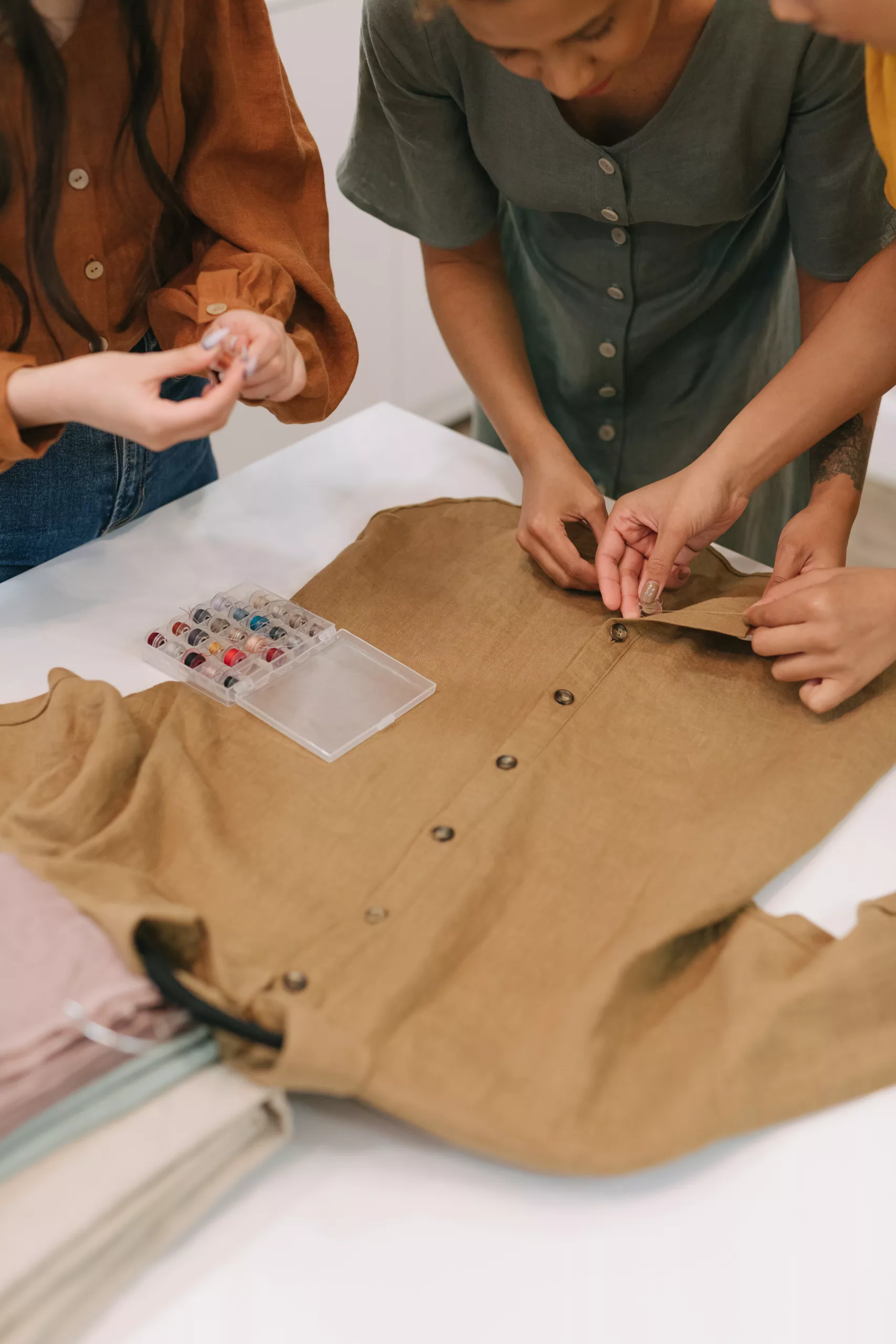
This image is property of wiser.eco.
Hemp farming and Regenerative Practices
Restoring Biodiversity
Hemp cultivation contributes to the restoration of biodiversity and the preservation of ecosystems. By providing an alternative to monoculture farming systems, hemp fields support a greater variety of plant and animal species. Furthermore, hemp’s dense growth and deep roots help prevent soil erosion, protecting aquatic habitats and fostering a healthier ecosystem. By supporting hemp farming practices, you actively contribute to the conservation of biodiversity and the preservation of natural habitats.
Soil Regeneration
Hemp cultivation plays a crucial role in soil regeneration and health. The deep-reaching taproots of hemp plants break up compacted soil, improve drainage, and enhance soil structure. As hemp grows, it adds organic matter to the soil, enriching it with essential nutrients. Hemp’s ability to absorb excess nutrients also helps prevent nutrient runoff, reducing the risk of water pollution. These regenerative practices support soil health and create a foundation for sustainable agriculture.
Carbon Sequestration
Hemp plants have a unique ability to sequester carbon dioxide from the atmosphere. During its growth cycle, hemp absorbs more CO2 than it emits, making it a valuable tool in combating climate change. By cultivating hemp for textile production, farmers contribute to removing greenhouse gases from the air and offsetting carbon emissions. Hemp’s carbon sequestration potential further solidifies its position as a sustainable and environmentally friendly choice.
Utilizing Hemp as a Crop Rotation Solution
Hemp’s regenerative properties make it an excellent crop rotation solution for farmers. Hemp’s deep root system helps break up compacted soil, improving its fertility, and reducing the need for synthetic fertilizers. Additionally, hemp’s ability to suppress weeds inhibits the growth of herbicide-resistant plants, providing a natural solution to weed management. By incorporating hemp into crop rotation cycles, farmers can maintain healthy and sustainable agriculture practices.
Supporting Sustainable Agriculture
Hemp farming promotes sustainable agriculture as a whole. The cultivation of hemp often requires fewer pesticides, herbicides, and synthetic fertilizers compared to other crops like cotton. This reduces chemical runoff, soil contamination, and the negative impacts on water ecosystems. Furthermore, hemp’s low water requirements minimize strain on water sources and support sustainable water management. By embracing hemp farming, we can support a more sustainable and resilient agricultural system.
Challenges and Future Potential of Hemp Clothing
Limited Availability and Accessibility
While the popularity of hemp clothing has increased in recent years, its availability and accessibility remain somewhat limited. This is partly due to outdated regulations and stigmas surrounding hemp cultivation and production. However, as awareness and demand for sustainable and ethical fashion grow, it is expected that the availability and accessibility of hemp clothing will expand, making it more readily accessible to consumers.
Research and Development for Improved Textiles
The development of improved hemp textiles is an ongoing area of research and development. Advancements in technology and processing techniques are continuously being explored to enhance the softness, flexibility, and performance of hemp fabric. As research progresses, we can expect to see even more comfortable, versatile, and aesthetically pleasing hemp clothing options entering the market.
Education and Awareness
One of the challenges faced by the hemp clothing industry is the need for widespread education and awareness. Many consumers are still unfamiliar with the benefits and versatility of hemp clothing. Education initiatives and awareness campaigns play a vital role in dispelling myths, promoting the benefits of hemp clothing, and fostering a broader understanding of sustainable fashion options among the general public.
Policy and Legalization
Policy and legislation surrounding hemp cultivation and production differ from country to country, creating barriers and instability within the industry. Clear and consistent regulations that support sustainable hemp farming and textile production are crucial for the growth and stability of the hemp clothing market. Advocacy efforts aimed at influencing policy to recognize the potential of hemp as a sustainable resource will help unlock its full potential.
Collaboration and Innovation
Collaboration and innovation are key to the future potential of hemp clothing. By fostering partnerships between farmers, researchers, fashion brands, and policymakers, the industry can overcome challenges and drive innovation forward. Collaboration can lead to creative solutions, improved production techniques, and increased access to sustainable textiles. By embracing collaboration and innovation, the hemp clothing industry can grow and thrive, offering even more sustainable and stylish options to consumers.
In conclusion, hemp clothing offers numerous benefits that align with the values of the slow fashion movement. Its sustainability, durability, breathability, versatility, and ability to support ethical production have positioned hemp clothing as a sustainable choice for conscious consumers. As the hemp clothing industry continues to evolve, address challenges, and embrace innovation, its impact on the fashion industry and the planet’s wellbeing will undoubtedly grow. By choosing hemp clothing, you contribute to a more sustainable and ethical fashion landscape, fostering a better future for our planet and the people who inhabit it.
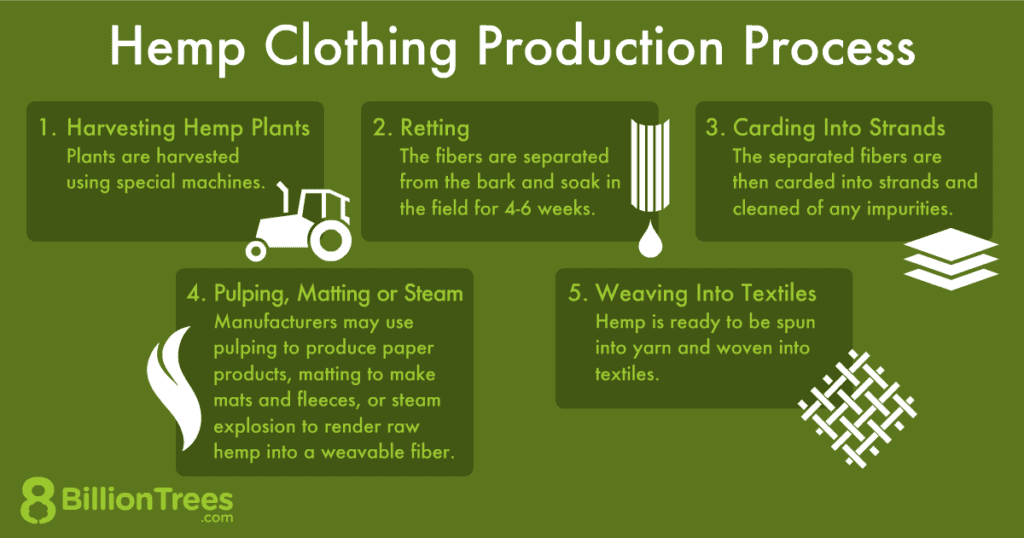
This image is property of 8billiontrees.com.
Recent Posts
Discover how bubble hash is rated on a 1 to 6 scale. From texture and color to aroma and potency, learn the key factors that determine the quality of bubble hash. Whether you're a seasoned cannabis...
Looking to learn about the most popular style of hash? This article explores the different types, from traditional to bubble hash, and reveals the people's favorite. Join us on a journey through the...

